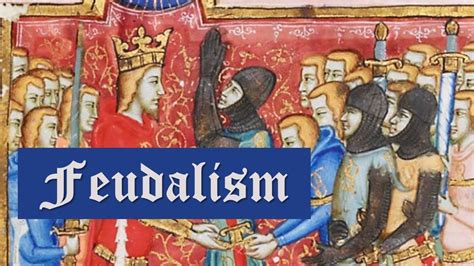Feudalism, a complex socio-political system prevalent during the Middle Ages in Europe and other regions, is defined by a hierarchical structure based on land ownership and military service. This intricate system significantly shaped societies’ economic, social, and political spheres.

Key Features of Feudalism
- Land Tenure: Under feudalism, land was the primary source of wealth and power. Vassals, or lesser lords, held land from their lord in exchange for military service.
- Feudal Contract: The relationship between lord and vassal was governed by a feudal contract, which stipulated the obligations and rights of both parties.
- Military Hierarchy: Feudalism created a hierarchical military system where lords provided protection and justice to their vassals in exchange for military support.
- Social Hierarchy: Society was divided into distinct classes, with the nobility at the top, followed by the clergy, knights, peasants, and serfs.
- Political Decentralization: Feudalism led to the fragmentation of political power among local lords, resulting in a decentralized political system.
Origins and Development of Feudalism
The origins of feudalism can be traced back to the collapse of the Roman Empire in the 5th century CE. As central authority weakened, local leaders emerged to protect their territories and provide security for the population. This led to the formation of private armies and the establishment of fortified castles.
Over time, these local leaders developed a system of land tenure and military service, establishing a symbiotic relationship between the aristocracy and the peasant population. Feudalism reached its peak in Europe during the 10th and 11th centuries CE, spreading to other regions such as Japan and China.
Economic and Social Impact of Feudalism
- Economic Structure: Feudalism introduced a manorial economy, where peasants worked on the lord’s land in exchange for protection and basic necessities.
- Social Stratification: Society became rigidly stratified, with the aristocracy occupying the highest ranks, followed by the clergy, knights, and then the peasantry.
- Agricultural Production: Feudalism encouraged agricultural productivity, as lords invested in land improvements and new technologies to increase their wealth.
- Peasant Life: Peasants faced numerous hardships, including heavy labor, limited freedom, and frequent outbreaks of disease and famine.
Political and Cultural Influence of Feudalism
- Political Decentralization: Feudalism led to the fragmentation of political power among local lords, creating a decentralized and often unstable political landscape.
- Chivalry and Knighthood: Chivalry emerged as an idealized code of conduct for knights, emphasizing honor, bravery, and loyalty.
- Feudal Law and Justice: Feudal courts dispensed justice based on local customs and traditions, often favoring the aristocracy.
- Artistic and Intellectual Achievements: Despite its limitations, feudalism fostered artistic and intellectual achievements, such as Gothic architecture, illuminated manuscripts, and the development of universities.
Decline and Legacy of Feudalism
The feudal system began to decline in the 13th century CE due to factors such as the rise of cities, the growth of trade and commerce, and the introduction of gunpowder. Centralized monarchies gradually reasserted their authority, and the feudal aristocracy slowly declined in power.
Feudalism left a lasting legacy on Western civilization, influencing political systems, social structures, and economic practices. Its hierarchical structure, emphasis on land ownership, and decentralized political system continue to impact modern societies in subtle ways.
Tables
Table 1: Feudal Hierarchy
| Rank | Title | Role |
|---|---|---|
| King | Sovereign | Highest authority |
| Dukes, Earls | Major Vassals | Govern large territories |
| Barons | Lesser Vassals | Hold land and provide military service |
| Knights | Aristocratic Warriors | Serve as vassals |
| Peasants, Serfs | Common People | Work the land and pay taxes |
Table 2: Economic Structure of Feudalism
| Component | Description |
|---|---|
| Manorial Economy | Peasants work on lord’s land |
| Three-Field System | Alternating crop rotation |
| Open-Field System | Communal farming |
Table 3: Political Landscape of Feudalism
| Feature | Description |
|---|---|
| Decentralized System | Local lords hold power |
| Feudal Contract | Defines relationships between lord and vassal |
| Feudal Courts | Dispense justice based on local customs |
Table 4: Intellectual and Cultural Achievements of Feudalism
| Category | Contribution |
|---|---|
| Architecture | Gothic cathedrals |
| Literature | Chivalric romances |
| Art | Illuminated manuscripts |
| Education | Universities |
